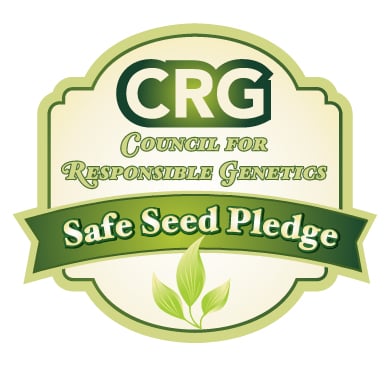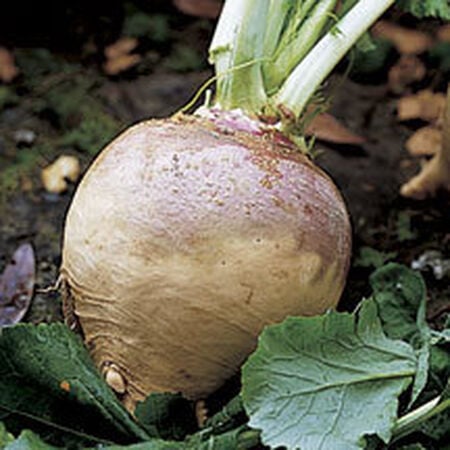American Purple Top, Rutabaga
Key Attributes
Key Attributes
Product Details
Weight
0.006Depth
0.1Height
4.5Width
3.25Plant Height
12-24"Botanical Name
Brassica napusSeed Type
SeedSeeds Per Gram
485Seeds Per Pound
220,000Row Spacing
12-18"Packet
200 SeedsSow Depth
1/4"Seeds Per Ounce
13,750Breed
Open-pollinatedSun
Full SunCubic Inches
1.4625Life Cycle
AnnualSow Method
Direct SowPlant Spacing
6"Categories
RutabagaGermination
4,5,6,7,8,9,10Days To Maturity (# Days)
90-100Heirloom
HeirloomSeeds Per Acre
15 oz.Components
Growing Instructions
![]() Learning Download: How to Grow Rutabaga
Learning Download: How to Grow Rutabaga
Rutabaga is a cross between turnips and cabbage. They are in the mustard family and they have a golden root that tastes like peppery cabbage and sweetens as it is cooked.
Before Planting: Rutabagas prefer well drained soils with an abundants of potash and phosphorus. Soil should have a pH close between 6-7.0. For customary fall and winter use plant in late spring, or early summer or about 90 days before intended harvest.
Planting: Direct sow seeds in the late spring after all dangers of frost have passed. Plant seeds about 1/2 inch deep. Once seedlings reach 3 to 4 inches, thin them to leave enough space for the bulbs to mature.
Watering: Rutabagas require at least one inch of water a week to allow for adequate root development.
Fertilizer: Add a light dressing of fertilizer to the area you plan to plant your rutabaga seeds a few weeks prior to planting.
Days to Maturity: Rutabagas have a long growing season and can take up to 3 or 4 months to come to maturity.
Harvesting: After a few fall frosts, cut tops and store unwashed roots in the refrigerator for up to 6 months. Greens can be harvested anytime after they have reached 4 inches tall.
Tips: Bugs will chew on the leaves of the rutabaga, so if you plan on harvesting the greens, consider using a row cover to keep the harmful bugs away from the plant.
Shipping Schedule
Our Seed Promise
 "Agriculture and seeds" provide the basis upon which our lives depend. We must protect this foundation as a safe and genetically stable source for future generations. For the benefit of all farmers, gardeners and consumers who want an alternative, we pledge that we do not knowingly buy or sell genetically engineered seeds or plants.
"Agriculture and seeds" provide the basis upon which our lives depend. We must protect this foundation as a safe and genetically stable source for future generations. For the benefit of all farmers, gardeners and consumers who want an alternative, we pledge that we do not knowingly buy or sell genetically engineered seeds or plants.
The mechanical transfer of genetic material outside of natural reproductive methods and between genera, families or kingdoms, poses great biological risks as well as economic, political, and cultural threats. We feel that genetically engineered varieties have been insufficiently tested prior to public release. More research and testing is necessary to further assess the potential risks of genetically engineered seeds. Further, we wish to support agricultural progress that leads to healthier soils, to genetically diverse agricultural ecosystems, and ultimately to healthy people and communities.
To learn more about the "Safe Seed Pledge" please visit www.councilforresponsiblegenetics.org.

